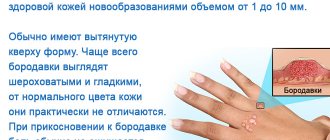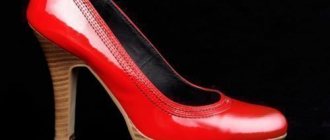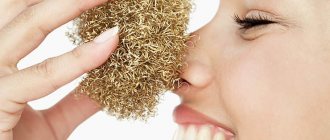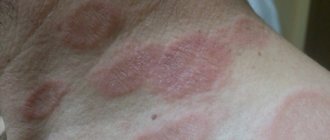A boil in the nose is an acute inflammation of the hair follicle, sebaceous gland, and adjacent tissues . This process is purulent-necrotic in nature and can be very difficult. Most often, an abscess appears in the lower part of the nasal passage or even under the nose, which is considered a very dangerous condition. Boils can appear in both adults and children. People with concomitant pathologies that predispose them to the formation of pustules on different parts of the body are especially susceptible to them.
Causes
Boils in the nose appear due to a staphylococcal or streptococcal infection entering the hair follicle.
These pathogenic bacteria have a high level of virulence. Getting into the sebaceous glands and hair follicles, they provoke a strong inflammatory process. Pustules rarely appear in completely healthy people. Factors predisposing to this disease are:
- Decreased immunity due to various infectious diseases.
- Skin susceptibility to staphylococcus.
- Clogged skin pores that impair secretory function.
- Minor scratches and scratches.
- Contamination of facial skin with dust or dirt.
- Impaired metabolism.
- Hormonal disorders.
- Diabetes.
If boils often appear on the face, then diabetes mellitus must be ruled out. It is this symptom that often indicates the development of various autoimmune disorders.
In case of furunculosis, the doctor must refer the patient for sugar testing.
Causes and course of the disease
The cause of a carbuncle or boil of the nose is staphylococcus. Due to the prevalence of carriage, Streptococcus aureus plays a dominant role. The cause of a boil can also be streptococci (beta - hemolytic streptococcus of group A). Groups of streptococci such as viridans and non-hemolytic cause this disease much less frequently. The development of the disease is significantly influenced by a decrease in human immunity. This helps to increase the number of boil recurrences. The following diseases have an adverse effect on the course of the disease, increase the frequency of relapses and affect the prognosis:
- hypovitaminosis;
- diseases of the digestive system;
- diabetes.
The penetration of infection into the area of the external nose and the vestibule of the nasal cavity is facilitated by:
- violation of skin integrity due to microtraumas;
- skin pollution;
- the influence of such production factors as cement and coal dust, fuels and lubricants;
- overheating or hypothermia, which significantly reduce the anti-infective resistance of the skin.
Two or three boils may merge together to form a carbuncle. In this case, an increase in local inflammation is observed. The hair follicle is surrounded by an inflamed infiltrate (accumulation of fluid in the tissues of cellular elements mixed with lymph and blood). The process of thrombosis begins in small venous vessels. An increase in infiltrate can cause the spread of thrombosis into the vessels of the skull, which can lead to the development of severe intracranial complications or sepsis.
How does pathology develop?
An abscess in the nose is accompanied by severe pain at the site of inflammation.
Painful sensations appear simultaneously with the appearance of a red, cone-shaped neoplasm, which has fairly clear edges. After just a few days, an abscess begins to appear on top of this cone. The tip of a mature boil has a whitish-yellow hue. If you apply antibacterial ointment to the site of inflammation, the boil in your nose will mature in just two days. The boil has two stages of development:
- Infiltration stage.
- Abscess formation stage.
During the formation of a boil on the nose, the skin becomes red and very swollen, all this is accompanied by severe pain . As the disease progresses, inflammation and swelling can move lower and affect the nasolabial triangle.
In some cases, several boils in the nose merge into one large one. This leads to the development of a carbuncle, which is a very dangerous condition.
Furuncle on the nose: main causes
Experts have reliably recorded a wide variety of causes for the formation of a boil in the nose area. For the most part, this is the direct entry of infectious negative agents into soft tissues through direct contact with the membranes of the nose.
Photo 18 - A boil develops after an infection
The most common reasons include:
- Failure to comply with basic hygiene recommendations - when dirty hands come into contact with the nose area - the infection directly enters its follicles.
Photo 19 – Maintain hygiene
- The contact path also involves the use of contaminated household items, for example, towels or clothing.
Photo 20 - Use clean towels
- Why a boil occurs on the nose is the use of dirty water. The solution is to buy a special modern filter.
Photo 21 - Use a water filter, or wash your face with boiled water
- The presence of somatic pathologies of the skull area - sinusitis or sinusitis, adenoiditis or rhinitis, with their concomitant discharge from the nasal passages: a favorable environment for the proliferation of infectious agents.
Photo 22 - Sinusitis - the cause of the boil
- Weakened individual immune barriers contribute to the formation of furunculosis not only in the nose area, but also on other parts of the body.
Photo 23 - Boost your immunity
- In pediatric practice, boils on the face are recorded as a complication of helminthiasis, for example, giardiasis or opisthorchiasis.
Photo 24 - If your child has a boil, consult your pediatrician
Symptoms
The disease always begins with the appearance of a limited area of reddened skin and painful swelling with unclear boundaries.
It is at this point that the infiltrate subsequently develops. Most often, a boil forms at the entrance to the nose, since this is where the most hair follicles are located. Much less often, the pathological process develops on the wings of the nose, inside the nasal passages and on the bridge of the nose. The most complications can arise if the abscess is located in the area of the nasolabial triangle. After 2-3 days, a white head of an abscess appears in the area of redness, which has a rod. If the inflammatory process is severe, then swelling may affect the cheek and lip.
A boil on or in the nose is always accompanied by characteristic symptoms:
- The skin of the nose is very painful. The pain can radiate to the temples, teeth and head even with a slight touch.
- The skin of the nose is severely inflamed and swollen. Visually, the nose increases slightly in size.
- Swelling may spread to the facial skin.
- Body temperature most often rises to 38 degrees.
- Severe weakness appears.
- If the disease is advanced, nasal breathing may be impaired.
A patient with furunculosis always develops symptoms of general intoxication of the body. This includes headache, general weakness, dizziness and nausea. The more advanced the disease, the brighter the clinical picture. In the area of inflammation, the patient feels a burning, throbbing pain.
Against the background of furunculosis, regional lymph nodes often become inflamed, which leads to lymphadenitis.
How to quickly and safely get rid of a boil on the face: local therapy or surgery
The formation of boils on the face entails physical and psychological discomfort. Unlike a regular pimple, without proper treatment, an abscess can cause a number of life-threatening consequences. Boils on the face should be treated with caution, after consulting a doctor.
Stages of ripening and features of localization on the face
From the onset of the first symptoms of illness to the healing of the skin tissue, the boil goes through 3 stages.
- At the infiltration stage, redness with slight thickening appears on the skin. The seal increases in size. Swelling, itching, local hyperthermia, and pain occur. The subcutaneous lump is inactive.
- During the purulent-necrotic period, the core of the boil appears on the compaction - a white purulent head. After a further course, the purulent contents of the boils will come out. Accompanied by acute pain and tingling. A slight touch brings discomfort.
- The healing stage begins after the abscess breaks through. A cavity forms at the site of compaction. The size depends on the depth and scale of the chirp. On average, the healing process lasts 2-4 weeks.
A boil can pop up on any part of the face. Often found on the chin, cheeks, and nasolabial triangle. They appear on the forehead in the area of hair growth and are large in size.
Less commonly, boils can be seen on the eyebrows and nose. Abscesses in the temple area are large. Facial ulcers are the most dangerous.
When the infection spreads, there is a high risk of dangerous diseases, including meningitis.
Treatment methods for boils on the face
Treatment of furunculosis on the face is a necessary and responsible process. Lack of action delays the healing process and is accompanied by physical and emotional discomfort. If the treatment is incorrectly selected, a person can worsen the course of the disease. Before starting therapeutic measures at home, you should consult your doctor.
Operative techniques
Surgery for boils on the face is resorted to in cases where the focus of inflammation is large, there is a risk of rupture of the purulent capsule inward. Indication for surgery is the presence of severe accompanying symptoms - fever, swelling, intoxication of the body.
The surgical excision method is an effective way to get rid of a boil on the face. After administering the anesthetic, the surgeon cuts the skin over the boil, releasing the purulent capsule.
The incision site is disinfected and washed. A drain is placed into the resulting cavity, removing fluid accumulations and helping to speed up the healing process. The wound is dressed with a sterile bandage containing an antibiotic.
The operation time depends on the size of the boil and the number of purulent foci. On average, it takes 30-40 minutes to cut out a boil.
Laser surgery is similar in principle to surgery using a scalpel. The difference between removal is made by several factors:
- the cut is made using a laser beam;
- the device has the ability to coagulate - cauterize small blood vessels;
- the method eliminates direct contact with the skin;
- the procedure is painless and does not require the use of analgesics;
- After surgery, there is no likelihood of residual symptoms - scars, cicatrices.
Contact between the instrument and the skin is excluded, there is no risk of spreading an infectious agent or acquiring a bacterial infection.
Ointments, creams
Conservative treatment consists of using ointments and creams from the pharmacy. Drugs are distinguished by their principle of action, stage of use, and purpose.
Drawing ointments warm the abscess, helping it to mature. The products are used in the first stage, until the pus begins to come out.
An effective and popular drug is ichthyol ointment. It has a specific smell and a dense viscous consistency. Ichthyol should be smeared in a thick layer on the affected area, cotton wool applied, and secured with a plaster. The compress is worn for 2 hours, after which the remaining substance is removed from the skin. Daily use will help quickly cure the boil by drawing out the contents of the purulent capsule.
Vishnevsky ointment has a similar effect to ichthyol. Generously lubricate the boil on the face and apply a bandage. Repeat the procedure 3-4 times a day. Balsamic liniment can be anointed during ripening and after the abscess has broken through, for rapid healing of the wound.
Antibiotic ointments are designed to fight the pathogen and cause of the abscess - staphylococcus. They have a pronounced antibacterial effect and block the ability of microorganisms to reproduce. The use of drugs helps to get rid of the inflammatory process and accompanying symptoms, and speed up the healing process.
Levomekol is a common antibacterial agent for getting rid of skin rashes. Has a depressing effect on the pathogen. The drug can be spread during the maturation of chiria and during the healing stage. The ointment prevents the spread of infection, promotes the resorption of ulcers, and accelerates tissue regeneration.
Oflokain is an ointment with a pronounced antibacterial and analgesic effect. The components of the drug affect the infection, blocking the ability to reproduce. After use, the anti-inflammatory effect is noticeable, painful symptoms become less pronounced.
Tetracycline is a drug that helps treat purulent processes on the skin. Prescribed to combat pathogens and eliminate inflammatory symptoms. Not prescribed for the treatment of boils on the face of a child under 11 years of age, pregnant or lactating women.
Healing ointments accelerate the process of tissue regeneration. Prevents the colonization of bacteria in the wound, relieves swelling and itching.
Zinc ointment has a pronounced antiseptic, anti-inflammatory, regenerating effect. Due to the influence of the component, the ointment dries the wound surface, accelerating the recovery process. The drug does not cause side effects.
Solcoseryl gel is indicated for the recovery period. The drug helps relieve inflammation and itching. When applied, the gel does not create a film on the skin. Penetrates well into tissues. Promotes rapid drying of purulent wounds.
The skin and wound can be treated with antiseptic solutions - hydrogen peroxide, furatsilin, potassium permanganate.
Home treatment
Treat boils located on the face at home only after consulting a specialist. Traditional recipes are used for home treatment.
A popular remedy to remove a boil located on the face is baked onions. The onion is baked in the oven, after 1 cut of the vegetable is placed on the ripening boil. A warming bandage is placed on top. The compress is kept on the inflammation for 2 hours, then removed.
Honey dough has proven itself well. Combine flour, butter, honey in a container and mix. The resulting dough is applied to the abscess and secured with a bandage. The bandage is changed 3-4 times a day.
So that chiryak can ripen faster, use compresses with warm vodka, pine infusions, laundry soap, aloe leaves, Kalanchoe, chopped garlic, and black bread pulp.
How not to damage your appearance
To maintain the beauty and health of your facial skin, you need to follow some rules:
- It is forbidden to squeeze, scratch, or pierce boils, as this may provoke internal opening of the purulent capsule. Will lead to swelling, spread of infection, complications. Squeezing increases the risk of subsequent scarring and scarring on the facial skin.
- It is unacceptable to heat a ripe boil.
- Going to a bathhouse, sauna, swimming pools, or public bathing places is contraindicated.
- It is better to avoid using cosmetics during the development of a boil and until the wound has completely healed. Some drugs can provoke the opening of an abscess and lead to the development of dangerous consequences.
- If the boil is located in the nasolabial triangle, on the chin, men should refrain from shaving. There is a high risk of damage to the abscess.
- Scrubs, masks, and abrasives are not used.
- After washing, dry your face carefully, without unnecessary friction.
- The use of medications without prescription is contraindicated. A person who decides to treat himself may worsen the situation. Delay the healing process and cause increased symptoms.
By following the recommendations step by step, a person will be able to get rid of abscesses quickly, painlessly, with minimal risks to their own appearance.
Diagnostics
Making a diagnosis in this case does not cause difficulties for doctors.
The disease can be diagnosed based on examination of the patient and test data. A clinical blood test is taken into account, where the level of leukocytes and ESR are of particular importance. The more these two indicators are elevated relative to the norm, the more severe the inflammatory process. If the boil is located inside the nasal passage, then rhinoscopy is used. This examination is carried out in compliance with all antiseptic rules so as not to cause a secondary infection.
There are several diseases that resemble furunculosis in their symptoms:
- Herpes - in this case, a small area with small blisters filled with liquid appears on the nasal mucosa. This is a viral disease.
- Folliculitis is a chronic lesion of the hair follicles. This pathology is often observed in men during the period of hormonal changes in the body.
- Fungi - in this case, whitish deposits appear on the membranes of the nose, which do not have clearly defined boundaries. This coating can make breathing very difficult.
- Acne – this disease is caused by severe blockage of the sebaceous glands.
It is very difficult to make a correct diagnosis on your own, since it is necessary to differentiate the diseases. If rashes appear in or on the nose, you should consult a specialist who will correctly diagnose and prescribe adequate treatment.
To identify a purulent infection at an early stage, it is necessary to donate blood for sterility.
Treatment of boils in the infiltration stage: traditional methods
The formation of infiltrate lasts from three to six days . During this period, it is necessary to use those means and methods of treatment that will accelerate the maturation of the abscess.
Recommended:
- Lubricating the developing boil with ordinary medical alcohol, iodine solution, and alcohol tincture of calendula. You can treat the source of inflammation up to several times a day.
- Applying dry heat. At home, this could be a small bag of heated salt or sand. It is strictly forbidden to make wet, warm compresses , since their impact leads to loosening of the subcutaneous layers, which in turn causes the spread of pus.
- Inhalations. Such procedures are necessary to accelerate the maturation of a deep-lying boil; inhalations also have antiseptic properties. You can breathe over oak or willow bark, sage, chamomile, and violet root.
- Applying ichthyol ointment or Vishnevsky ointment to the boil. These drugs accelerate the maturation of the purulent core. Honey cake also accelerates the maturation of pus. It is prepared from a spoonful of flour and a small amount of honey, the proportions are taken so that the resulting sticky mass is obtained. A small cake is formed from it, which can be fixed on top of the boil with an adhesive plaster.
- Use aloe leaf or garlic. A thin film is removed from the washed agave leaf, after which the fleshy part of the leaf is applied to the boil and fixed well. The garlic is cut into thin slices, one of which can also be placed on top of the abscess. It is better to replace such compresses every three hours.
All manipulations related to the treatment of growing boils must be carried out only with clean hands. It is impossible to press an abscess at the infiltration stage ; this often leads to the release of pus into the subcutaneous tissue, from where it quickly spreads to nearby structures.
Preparation of anesthetic ointment
If the growing boil is very painful, you can use a self-prepared ointment with an anesthetic and anti-inflammatory effect; it is prepared according to the following recipe:
- 15 grams of lemon balm leaves, 5 grams of green parsley, 10 grams of plantain leaves need to be finely chopped and mixed with lanolin and petroleum jelly, they will need 50 grams each. The forming boil is lubricated with the prepared ointment 4-5 times a day.
What to do if nasal swelling occurs
If during self-treatment of a nasal boil the inflammation intensifies, the swelling spreads to the surrounding tissues, and the body temperature rises, then you should immediately contact a medical facility.
Any ulcers in the facial area are considered potentially dangerous due to the high risk of pus penetrating into the membranes of the brain. The doctor may prescribe antibiotic therapy and, if necessary, perform an autopsy.
How to treat a boil in the nose
Furunculosis is always treated comprehensively, using local antiseptics, antibiotics, vitamins and immunomodulating agents. To treat the inflammatory process in the nasal area, the following drugs are prescribed:
- Antibacterial drugs from the group of cephalosporins, penicillins or macrolides.
- Antipyretics.
- Painkillers.
- Anticoagulants. These medications are necessary to prevent complications.
- Antiallergic drugs. Should be taken to reduce swelling.
In addition, conservative treatment always includes physiotherapeutic procedures. They promote the maturation of the boil and prevent various complications.
For local treatment, it is permissible to use various medications, mainly creams and ointments.
Levomekol
The most common remedy for furunculosis is Levomekol ointment.
Thanks to this drug, you can recover from ulcers in a matter of days. The ointment has pronounced antibacterial and anti-inflammatory properties. It is often used to treat ulcers of various etiologies, while its effectiveness in a purulent environment does not change at all. The use of ointment depends on the location of the inflammatory process. If the boil is located on the nose, then soak a sterile napkin with the ointment, which is then applied to the affected area. If the abscess is located in the nose, then squeeze out a little ointment in a saucer and slightly heat it in a water bath. Cotton pads are moistened in the resulting liquid and placed in the nasal passage. Levomekol dressings should be changed twice a day.
Levomekol has virtually no contraindications, so it can be used for furunculosis in a small child.
Ichthyolka
Ichthyol ointment has a powerful antimicrobial effect.
It is actively used to treat purulent diseases. This drug is applied in a thin layer to the pustules and, if necessary, covered with a bandage. The ointment has a rather unpleasant odor and viscous consistency. You need to make sure that during treatment the drug does not get on your clothes, as washing it off will be very problematic.
Vishnevsky ointment
A drug with strong antibacterial and anti-inflammatory effects.
The active substance is birch tar. This ointment has almost no contraindications; it can be used to treat adults and young children. Vishnevsky ointment should be used to lubricate the pustules several times a day. Thanks to the therapeutic effect of the drug, boils quickly disappear.
Tetracycline ointment
The active ingredient in this ointment is a strong antibiotic, tetracycline.
The inflamed area is pre-treated with an antiseptic, and then a thin layer of ointment is applied to the pustules. If necessary, problem areas can be covered with a sterile cloth. All these ointments are suitable for treating furunculosis at home. If one of the ointments does not help, you can replace it with another or alternate medications for greater effect.
Only the attending physician should prescribe medications for the treatment of furunculosis.
Treatment
I would immediately like to warn those who like to do treatment on their own - never try to do something on the advice of friends or relatives. It is almost impossible to get rid of a boil under the nose on your own by squeezing or heating the inflammation, or using ointments that were not prescribed to you. If inflammatory processes in the nose are detected, as can be seen in many photos, you must immediately contact a specialist. Depending on the severity of the disease, outpatient or inpatient treatment of a boil under the nose is prescribed. If the resulting inflammation is no more than 3 days old, then the boil is at the infiltration stage. In such a situation, conservative therapy is prescribed, which involves treatment with the following drugs:
- Antibiotics: macrolides, fluorochonolones, cephalosporins.
- Antibacterial ointments: Triderm (630-700 Russian rubles), Celestoderm (682-690), Vishnevsky (150).
- Anti-inflammatory drugs: Olfen (50‒100), Diclofenac (50‒100).
Triderm - an effective antibacterial ointment
In the second stage, a patient with a boil under the nose is prescribed an opening of the abscess using a local anesthetic. After the incision, the wound must be thoroughly cleaned and high-quality drainage is provided for the outflow of pus. A damp sterile bandage is applied to the place where the boil was under the nose. A boil under the nose in a child of any age is treated in the same way. All treatment is aimed at ensuring that the boil matures and breaks through as quickly as possible. In most cases, an ointment is applied to speed up the ripening process.
In case of relapses, the patient needs to undergo autohemotherapy, specific immunotherapy using antistaphylococcal medications, bacteriophages.
Surgery
If conservative treatment does not give an effect, then they resort to a wide opening of the abscess.
This operation is necessary to eliminate suppuration. Upon opening, drainage is placed in the wound, which facilitates the rapid drainage of pus, and an antiseptic bandage is applied. This manipulation is performed under local anesthesia. Surgery is always performed against the background of antibacterial therapy. The patient should take antibiotics before and after surgery. After the drainage is removed, bandages with antiseptic ointments and solutions are applied to the wound for about another week.
You need to take antibiotics for furunculosis for at least 5 days, otherwise a superinfection may occur.
Clinical picture of the disease
At the very beginning, a limited area of redness appears on the skin with unclear boundaries and swelling of the tissues.
When you feel this place it hurts a lot. Over time, swelling spreads to the lip, cheek and other nearby areas of the face.
A limited cone-shaped infiltrate appears on the skin, which sharply hurts when touched. The key symptoms are sharp pain and swelling in the affected area. This is the infiltration stage.
A few days later, a yellow-white abscess, the so-called core, appears at the top of the infiltrate.
Throughout the course of the disease, until the purulent lesion is opened, the patient is bothered by general symptoms: weakness, fever, headaches, joint aches, loss of appetite and other signs of intoxication. The so-called abscess stage.
After the abscess in the nose is opened, the resolution stage begins. General symptoms weaken and the patient’s well-being improves significantly.
The abscess opens independently or after surgery. In some cases, an abortive course of the disease is observed, when the infiltrate resolves without spontaneous drainage.
Complications
Regardless of where the boil appears, self-medication is unacceptable. If you squeeze a pimple yourself, there can be quite serious consequences. Frequent complications of a nasal boil are:
- Lymphadenitis.
- Thrombophlebitis.
- Brain thrombosis.
- Blood poisoning.
- Meningitis.
The most dangerous areas in terms of the spread of infection are areas where large blood vessels are located. These include the nasolabial triangle.
Treatment of furunculosis should only take place under the supervision of a doctor and with strict adherence to all his recommendations.
The main complications of a nasal boil
A low level of the immune system and untimely treatment of an abscess can cause the following complications:
- An abscess is a limited purulent inflammation of the soft tissues of the facial area.
- Perichondritis of the nasal septum or inflammation of the cartilage tissue of the nose.
- Cavernous sinus thrombosis, in which a blood clot blocks the flow of blood from the eye area and skull.
- Pyemia. The presence of pus in the circulatory system is a severe complication of furunculosis, which often leads to death.
Folk recipes
Treatment of furunculosis at home is also possible using traditional medicine recipes. But such methods can only be used in consultation with a doctor and as an addition to drug therapy. The following recipes are considered the most effective:
- The area of inflammation is treated with camphor oil several times a day until the abscess breaks through.
- A small potato is peeled and grated on a fine grater, a sterile bandage is moistened in the resulting pulp and applied to the boil.
- The raw onion is grated and the juice is squeezed out of the resulting pulp. Take aloe and onion juice in equal proportions and mix. Moisten gauze pads in the resulting composition and apply to the affected area.
- Take 2 tablespoons of dried calendula flowers. Grind them into powder and mix with baby cream. The resulting ointment is applied to the boil 5 times a day.
- It is recommended to drink half a glass of decoction from a collection of medicinal herbs three times a day. It includes thyme, chamomile, yarrow and calendula. It is enough for children to give just a tablespoon of decoction 4 times a day.
People who suffer from pollen allergies should be treated with medicinal herbs with great caution.
If, despite the treatment, the patient’s condition worsens and signs of intoxication of the body appear more and more, it is necessary to consult a doctor . You shouldn’t waste time and wait for everything to go away on its own, as this can lead to serious complications.
Conservative treatment of boils
Drug therapy for furunculosis is carried out using local treatment of the skin with antibacterial agents. To do this, use the following ointments based on the following substances:
- Gentamicin. The drug shows high effectiveness against many types of staphylococcal infections.
- Tetracycline. The product is produced in the form of tubes of 100 g. Tetracycline ointment is a broad-spectrum antibacterial drug.
- Levomycetin. The medication is a powerful antibiotic that actively eliminates purulent lesions of the skin.
- Levomikol. In addition to its antibacterial effect, this pharmaceutical product has a regenerative effect on soft tissues. Indications for its use are opened ulcers.
- Sintomycin, which is considered an analogue of levomycin ointment.
- Demexide. This drug is considered a non-steroidal anti-inflammatory drug that effectively eliminates signs of inflammation and pain.
Application of ichthyol ointment
Ichthyol ointment, the active component of which is ichthyol, is applied directly to the inflamed area of the skin. The medicine has anti-inflammatory, analgesic and antiseptic effects.
The therapeutic effect of the product appears within a few hours after applying the ointment to the boil. Ichthyol should be replaced every 8 hours. A significant improvement in the patient’s well-being is observed on the second day.
Antibiotic therapy for nasal boils
Antibiotics are used in the following cases:
- complications of purulent inflammation of the hair follicle in the form of lymphadenitis (enlargement and pain of regional lymph nodes);
- increase in body temperature up to 39⁰С;
- presence of concomitant general diseases (diabetes mellitus, HIV).
Antibiotic therapy is carried out with the following medications:
- Penicillins (ampicillin, amoxicillin, amoxiclav). These antibiotics kill staph infections.
- Cephalosporins (cefazolin, ceftriaxone, cefuroxime, cefotaxime). Their pronounced therapeutic effect is observed at the low cost of the antibiotic.
- Gentamicin, which has high bactericidal effectiveness. But the drug is contraindicated for children and pregnant women.
- Tetracycline. The antibiotic is used in the form of tablets, injections or ointments.
- Levomycetin, which is used only locally.
Physical procedures for the treatment of boils
At the early stage of the disease and during recovery, the patient undergoes the following measures:
- UV therapy. Ultraviolet irradiation of the pathological area destroys the pathological microflora and promotes rapid wound healing.
- Laser therapy. Laser radiation activates local blood supply to tissues, stimulates the restoration of the epidermis and destroys pathogenic infection.
Treatment of purulent skin lesions at home
At the infiltration stage, the patient can carry out the following treatment measures on an outpatient basis:
- treating the skin with weak antiseptic solutions;
- regular hand washing with bactericidal soap;
- cauterization of the source of suppuration with a 5% iodine solution;
- UHF therapy and laser therapy.










